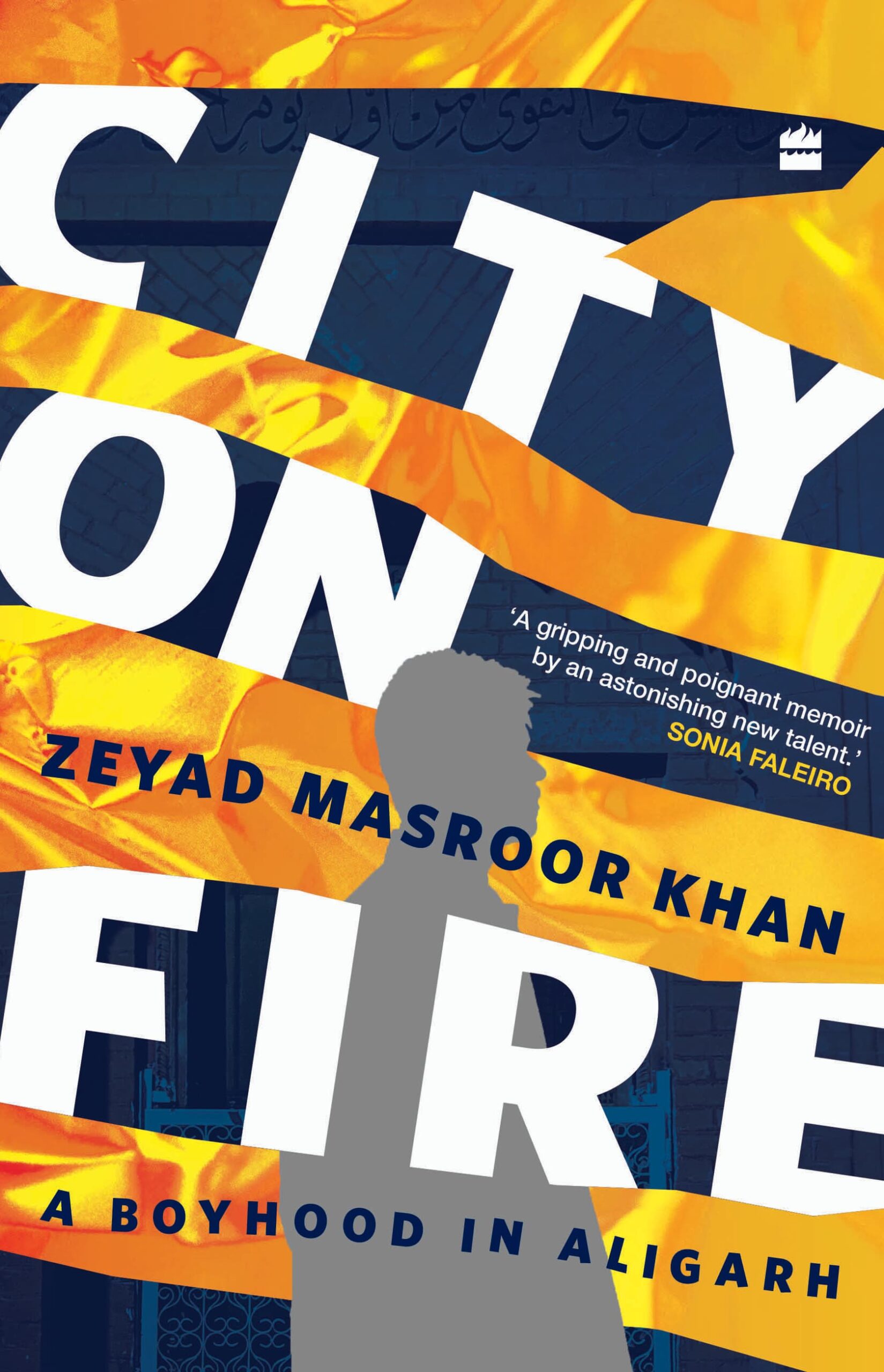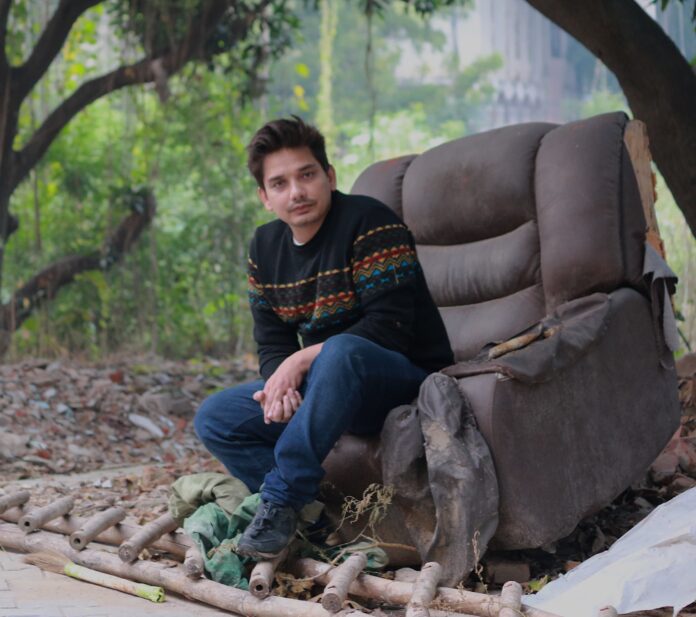Arshad Ahmed | Two Circles
As a four-year-old boy, Zeyad Masroor Khan did not know the pitfalls of living in Aligarh, a city he called his, but only in fragments as he lived in a Muslim ghetto.
So much removed from the communal realities lurking around him, Khan’s first encounter with the truth of the city crystallised when he first turned on a light switch in Farsh Manzil, his house, which led to a frantic commotion as calls of riot grew louder around him.
In his coming-of-age memoir, ‘City on Fire: A Boyhood In Aligarh’ published in December 2023, Khan earnestly recollects his days in a Muslim ghetto, Upar Kot, as a child in the wake of the Babri demolition.
The book is Khan’s first-person experience of growing up in between communal fissures in Aligarh and the overt display of prejudice against his religious identity that he came to terms with from city to city. The memoir is also quite telling of discrimination and tacit bitterness that shadow Muslims in India regardless of their social status.
It is also the author’s catharsis from years of bottling up feelings that emerged from living in a communal vortex. In the words of the author himself, the memoir is both his escape and refuge.
It also offers instances of humility and kindness — albeit fewer in number — which reaffirm Khan’s idea of pluralistic India in harmony. But with a burgeoning majoritarian overdrive where hatred against Khan and people from his religion is celebrated, the book also uncovers what his idea of India has at stake amid the question of hope.
Khan, 35, is a journalist and documentary filmmaker based in Delhi. He has formerly worked with Vice India, Reuters, Deccan Herald, and Brut India in different positions.
Khan’s memoir is also a recollection of his days through different episodes of communal violence in the city and elsewhere that shaped him and with him, the very idea of India now as well.
City on Fire: A Boyhood In Aligarh is also a cautionary tale about how popular culture has engineered the otherization of Muslims and what is at stake for India.
In an interview with Two Circles, Khan discusses his book.
Q. How and when did you feel that you must pen down your lived experience in this memoir? What was the trigger?
I have been meaning to write this book for eight years, but the Delhi riot of 2020 was one of the triggers. During the Delhi riot of 2020, I saw the powers that were attacking you, celebrating your deaths, and pinning the blame on you (referring to Muslims). I have grown up seeing these things in Aligarh where after a communal flare-up, the police would shoot at Muslim boys, and arrest Muslim boys. I thought Delhi was a safer place for me after I moved in here and that I had evaded the riots, but the Delhi riots broke my delusion.
Q. You described Farsh Manzil as the “cusp of two civilisations” in a town simmering communal tension. How was it for you to live in Farsh Manzil in Aligarh?
It was a beautiful childhood in Farsh Manzil, like every life in the world. The Muslims lived on the top of the slope and the Hindus at the bottom in the century old Farsh Manzil building. There were times when invectives and abuses would fly in the air after communal tension, but for some reason, everybody used to come together for friendship.
Q. What were your memories from the riot that led to the demolition of Babri? You were four, but any anecdotes?
I have just one memory of that time. During the Babri demolition, there was a button in my home. I did not know what the button was for, but when I pressed it, all hell broke loose in the Muslim neighbourhood. The button was to alert the Muslims against a charged-up Hindu mob during riots. The button was not only installed in our home. It was a defence mechanism used by the Muslims in the neighbourhood to protect themselves.

Q. In ‘Daant kati Roti’ we were introduced to how friends, even the closest ones as well, could turn hostile and indifferent to us during communal violence. Can you share any personal experience of such betrayals?
In my book, I gave examples of how friends did not stand up for friends because they belonged to a different religion. I also narrated how a girl was left to die by her Hindu friends. In my case, the son of the grocery shop owner from whom my family had been shopping for three generations, pointed me out to a Hindu mob in another Hindu-Muslim riot in Aligarh.
Q. In retrospect, is the Aligarh of your childhood kinder to the Aligarh you visit now?
To be honest, even with all the violence, the Aligarh of my childhood was kinder to the Aligarh now. Aligarh now sees less violence but its people have too much violence on their minds. During those times religious slurs against Muslims were discouraged by elderly people, but now slurs against Muslims are a good thing.
Q. You have gone through the memories of three riots — The Babri when you were 4, the Gujarat riot when you were 14, and the most recent the Delhi riot — that have occupied a better part of your boyhood. For a Muslim growing up in Northern India, how did these shape your transition from a boy to a man?
As a boy, I would shy away from my Muslim identity, that it was just a mosque (referring to the demolition of Babri) and that Muslims should let it go.
And, that I would want to rise above and leave my ghetto. But as a man, I acknowledge these things. I don’t run away from my identity and the fact that I come from a ghetto. Earlier, I was ashamed of it, but now I wear it as my ornament.
Q. Your memoir is also a cautionary tale on how popular culture has fuelled the otherisation of a community. How do you see present India?
I used to read a lot of comic books and would see no Muslim heroes. The Muslims were always sidekicks and negative characters. Even in Bollywood, a Muslim is seen beating his wife. It alienates the Muslims. I also find Muslims playing good Samaritans in films as dehumanising. Show them how they are in the country. They do not need to be too good to deserve similar rights in the country. Do not show them in boxes.
Q. Looking back, an India that your grandfather chose during the partition has now become an India you find difficult to recognize. Is there any hope left?
I get asked this question a lot. Giving up on hope is a privileged thing. The privileged, in my opinion, are those who do not show resilience. They are those who lose hope. The poor who are living in India, show hope, and I get my hope from these people. So, there is hope for a change.
The 312-page book is published by HarperCollins India. It is available in Hardcover and Kindle editions, priced at INR 423 (USD 5.09) and INR 205.2 (USD 2.47), and is available on Amazon.
Arshad Ahmed is an independent journalist based in Assam.


